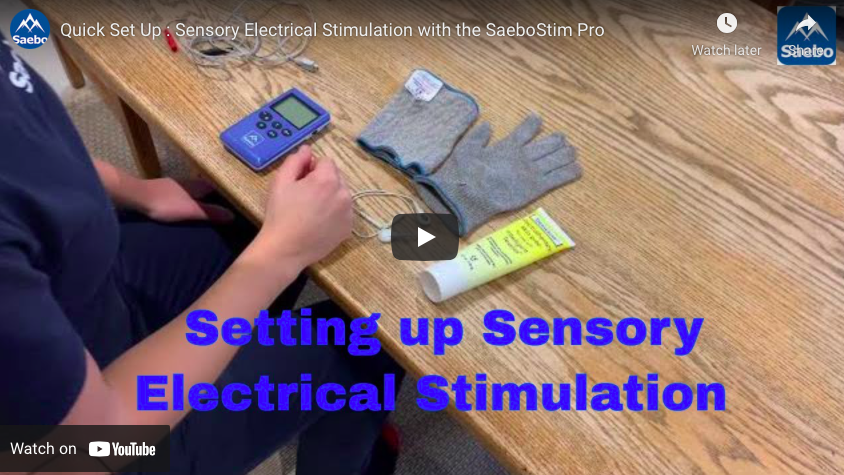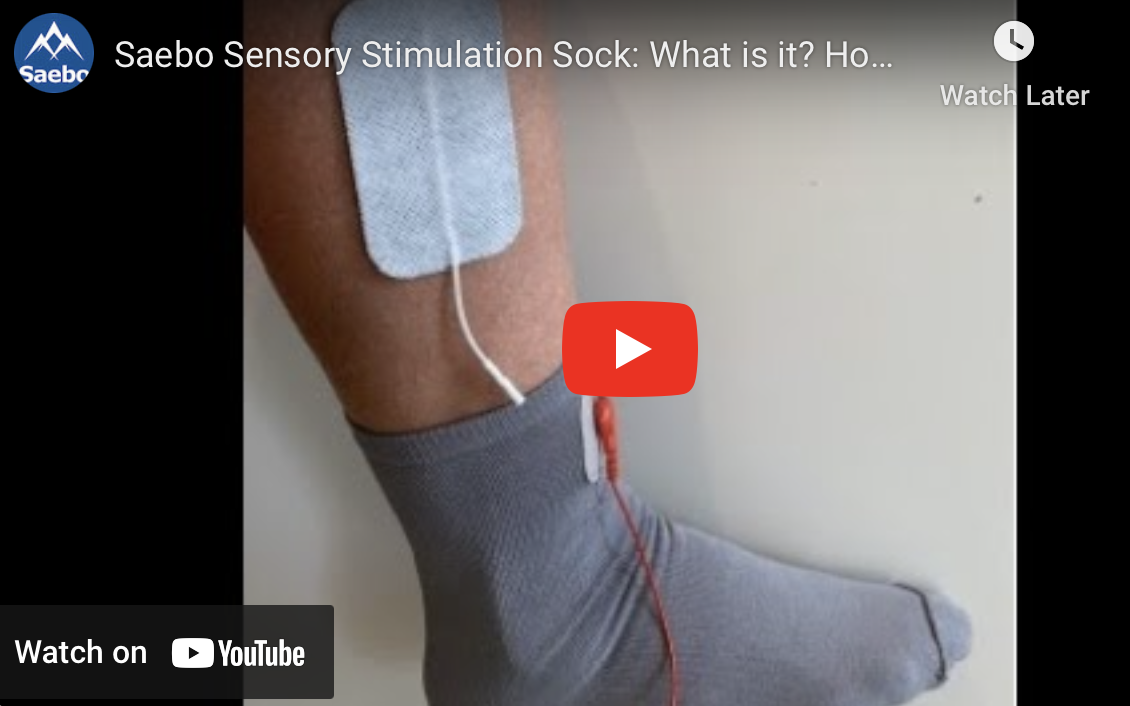Sensory Electrical Stimulation for Pain Management
Amy Bean
Wednesday, March 1st, 2023
The International Association for the Study of Pain defines pain as “An unpleasant sensory or emotional  experience associated with actual or potential tissue damage, or described in terms of such damage.” And this can be from many different causes ranging from arthritis in a joint, to muscle damage from a sports injury to “post stroke pain” which might be from a shoulder subluxation, spasticity or joint stiffness from lack of movement.
experience associated with actual or potential tissue damage, or described in terms of such damage.” And this can be from many different causes ranging from arthritis in a joint, to muscle damage from a sports injury to “post stroke pain” which might be from a shoulder subluxation, spasticity or joint stiffness from lack of movement.
We have previously discussed the use of TENS for pain relief in a previous blog but in this blog we are going to go more in depth into the use of Sensory Electrical Stimulation to manage pain.
With an injury from joint stiffness, muscle damage or over stretched ligaments/tendons for example, a person will usually have inflammation associated with this injury. The inflammation may be very small and not visible on the surface. The inflammation in turn causes poor circulation at the site of the injury which leads to a potentially toxic built up of unwanted substances such as lactic acid, carbon-dioxide, and metabolic waste and the body doesn’t like this. Injured cells and tissue don’t like living in an unhealthy environment and subsequently send a pain message to the brain.
The healthy cells, nerves, veins, etc. need oxygen and nutrition. Through the use of sensory electrical stimulation (SES) the formation of new blood vessels (angiogenesis) can occur . This will in turn increase micro-circulation in the damaged areas. It is the micro-circulation that can help decrease pain symptoms by clearing out the bodies unwanted substances. It can also increase nerve function (for those who may have neuropathy as well), which we will discuss on a future blog post.
SES is therefore a safe and cost effective alternative to drugs for pain management both in the short and long term.
How is SES delivered?
SES can be delivered through electrodes or electro mesh garments attached to an electrical stimulation device with specific settings for sensory stimulation (high frequency and short pulse width). Our own SaeboStim Pro has a pre set sensory programme as one its range of programmes (Programme 14). By using electro mesh garments as opposed to electrodes, the stimulation is dispersed over a much larger surface area and is more uniform in its delivery. It is also more comfortable for the user.
device with specific settings for sensory stimulation (high frequency and short pulse width). Our own SaeboStim Pro has a pre set sensory programme as one its range of programmes (Programme 14). By using electro mesh garments as opposed to electrodes, the stimulation is dispersed over a much larger surface area and is more uniform in its delivery. It is also more comfortable for the user.
Where can I use SES?
On any body part that requires pain relief and can have a mesh garment or electrodes applied to it. In addition to our glove and sleeve garments for the arm, Saebo UK has recently added a sock for the foot and ankle to our product range. The settings used are the same for any body part.
How often should I use SES?
There is no exact prescription supported by current research as to how often and how long SES should be used for pain relief. Whilst pain is present, general advice is to use it as required. It is non invasive and not addictive (as can be the case with pain medication) and can therefore be comfortably used daily, and more than once per day if required.
If using electrodes (as is required in combination with the sock for our SES kit for the foot) skin irritation is the limiting factor and it is good practice to limit to 30 minutes and remove the electrode to allow the skin to have a break. The sensory programme on the SaeboStim Pro is set at 30 minutes.
Can anyone use SES for pain relief?
No. Because SES is a form of electrical stimulation there are some medical reasons why it is not safe for some users. Always check the manufacturer’s manual for contraindications and precautions before using any electrical stimulation device. For our SaeboStim Pro if you are unsure if you can use it safely, please Contact Us directly to ask.
